This was published 6 years ago
In India, #metoo has barely scratched the surface
By Chris de Kretser
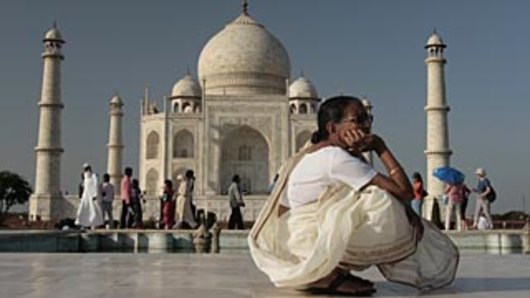
Despite its progress in many areas, India struggles with an image of brutal misogyny.Credit: Michele Mossop
While the New India rockets into the developed world at a frenzied pace, Old Mother India still struggles to shed an image of brutal misogyny and predominant patriarchy, notwithstanding recent successes buoyed by the #MeToo movement in the country.
An international survey conducted by Reuters last year branded the world’s largest democracy and fastest growing economy the most dangerous country in the world for women.
This in a nation that was once governed by long-serving Prime Minister Indira Gandhi, and that has also seen women play leading roles in it becoming a nuclear power and in male-dominant fields such as finance and banking, medicine and the law.
The present defence and foreign ministers are women, as are several other members of the Narendra Modi government. Women such as political party leaders Sonia Gandhi, Mamata Banerjee and Kumari Mayawati head the country’s Opposition.
The reaction to the survey has been to question the methodology not the facts. How could India be ranked worse than war-torn countries Afghanistan, Syria and Somalia, or authoritarian Saudi Arabia, has been the grudging criticism. But 41 of the 55 experts in the survey were Indian.
Having lived and travelled extensively in India for most of 2018, I have found the perception that it is a dangerous place for women to be very real.
The country’s own statistics don’t lie. Government data shows reported cases of crime against women rose by 83 per cent between 2007 and 2016, with four cases of rape every hour.
It has ballooned since. In 2016, a woman was raped every 13 minutes, six women were gang-raped every day, a bride was murdered for her dowry every 69 minutes, and 19 women were attacked with acid every month.
Add to that thousands of reported cases of domestic violence, sexual harassment, stalking, sexting and voyeurism.
In spite of the worldwide #MeToo movement having a loud media effect recently in exposing perpetrators among Bollywood stars, prominent journalists and officialdom, including a cabinet minister, the numbers are far from abating.
The biggest exposure involved deputy Foreign Minister M.J. Akbar, who resigned from the Modi cabinet in November after allegations of sexual misconduct by women who worked for him when he was one of the country’s leading newspaper editors.
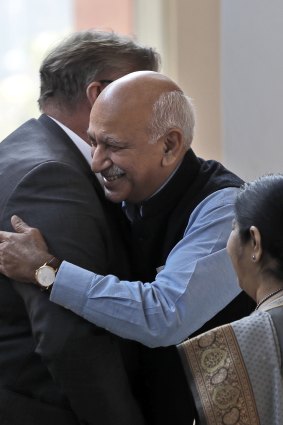
Former deputy foreign minister M. J. Akbar, centre, in New Delhi last year.Credit: AP
Like Hollywood, the campaign began mid-year in India's film industry, with shock casting-couch accusations against leading actors and directors. It has taken off more widely since, with women in many facets of the workforce giving the movement a voice.
There has even been a crackdown in sport, with Test cricketers Hardik Pandya and Lokesh Rahul suspended and sent home from Australia this month for boasting about their sexual conquests on a television program. That occurred at the height of idolatry for the cricket team at home after it had just won its first Test series in Australia and the Indian cricket board has asked the High Court to decide on an appropriate punishment.
The treatment was a far cry from the non-action taken against fast bowler Mohammed Shami in March last year when he was arrested on charges of attempted murder, rape and assault against his wife. But that was before #MeToo raised its voice in India and Shami was a key member of India’s bowling attack.
#MeToo might have impacted India’s social elite, but it has had no effect on the plight of the domestic help in every Indian household, or the village women dispatched by tradition to live in a jungle outhouse during menstruation. Children are molested by those they know and most girls have a story about a too-friendly “uncle’s” inappropriate touching.
On the surface, the modern Indian woman, especially in the major cities, appears to have asserted her independence. The flowing sari and salwar kameez have been shed for tight jeans, yoga pants and T-shirts. Arranged marriages have been cast aside by many for true love and romance. Traditional dress and customs have made way for the latest Western trends.
But the reality is that women, especially in the vast lower economic strata, the uneducated and the rural poor, are no safer from sexual predators on the street, in the home or in the village. Men still treat women as they please and #MeToo has barely caused a ripple in ending sexual violence among the majority.
“I don’t think people even now (with #MeToo) realise as to what degree the female gender is under assault,” Gurjan Sharma, a consultant and expert in gender and sexual health issues, told The Tribune newspaper.
“There’s hardly a woman, girl or child who has not been sexually abused in one way or the other to a certain degree.
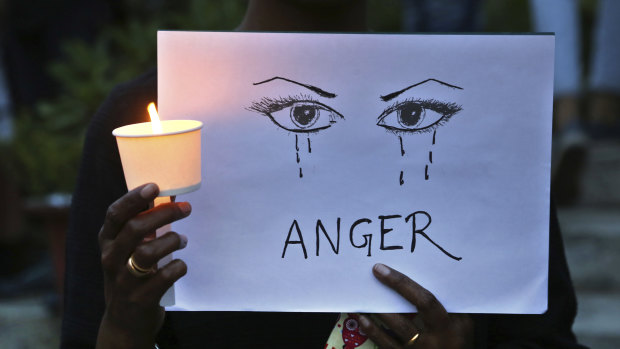
A woman holds a candle and placard seeking an end to sexual violence against women during a protest in Bangalore.Credit: AP
According to the latest government figures, a child is sexually abused every 15 minutes in India. And there is gross under-reporting on the issue.”
The daily media, which has taken up the cudgels to expose sexual violence, is filled with reports of it in efforts to name and shame. Horrifyingly, much of it seems to concern minors.
On a single day recently there were five separate cases of rape reported with separate headlines in The Times of India, the largest circulation English language newspaper. Each story involved an under-age child, one as young as seven and two 14 and two 15.
Early last year, an eight-year-old girl was abducted, gang-raped and murdered in a village area near Kathua in the disputed Kashmir region.
The Kathua horror has become a landmark case, much as the rape and murder of a student returning from the movies on a bus in outer Delhi was supposed to have made protection of women a national priority five years ago.
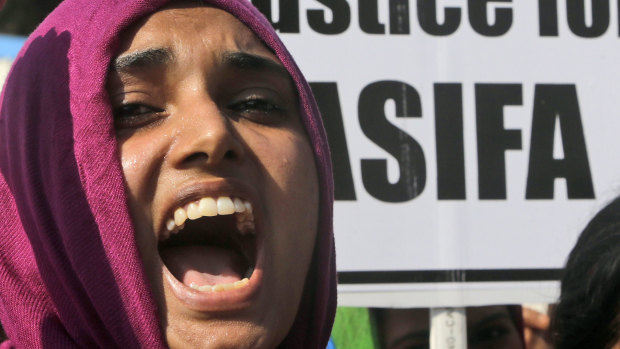
An activist shouts slogans at a protest against the incidence of rape and assaults in India.Credit: AP
Aside from the sheer savagery against a child, the Kathua attack seems to have evolved from the Hindu-Muslim religious and political conflict in the disputed region. The girl was from a nomadic Muslim community and the motive seemed to be to drive the villagers out of the district. The principal arrested was the local Hindu priest and the crime was committed at his private shrine.
Senior police and local politicians are among seven standing trial for the crime while other leaders have been cited for turning a blind eye and being involved in a cover-up. Two ministers from Modi’s pro-Hindu ruling party were forced to resign after publicly supporting the accused at protest rallies.
Like the Delhi gang-rape, the Kathua case sparked demonstrations and vigils, making greater India and the Indian diaspora sit up and take notice.
But late in July in the southern state of Tamil Nadu, there was more unspeakable horror. An 11-year-old deaf girl was found gang-raped by 22 men over a seven-month period. The rapes took place at the apartment complex where she lived after the elevator operator instigated the initial crime when she returned home from school.
He then organised other men to rape her on a regular basis. Injected with sedatives and drug-laced soft drinks, the girl became the sex slave for the domestic help at the complex near Chennai – the elevator operator, gardener, housekeeper, electrician, plumbers and security guards were arrested after the girl told her older sister visiting from Delhi about her trauma.
While government figures and authorities promise to end this scourge, the crimes against helpless young girls seem to get worse by the day.
Another horror surfaced in the poverty-stricken state of Bihar involving the institutional rape of girls in government care in a homeless shelter in Muzaffarpur. The crimes became known during an audit conducted on the institution, but no action was taken for months.
Foreign tourists haven’t been spared.
A Japanese woman was abducted and raped by a tourist taxi driver who befriended her while she was visiting a resort town in the Himalayan foothills in June. Then early in August, a Dutch woman visiting the Golden Temple in Amritsar in the Punjab with her parents was taken ill with food poisoning and hospitalised. A male nurse attempted to rape her in her hospital bed during the night.
Some of the worst perpetrators of sexual crimes against women in recent years have been India’s holy men, the self-styled "godmen" and gurus who preach spiritualism and are worshipped and followed by millions. Many of them have avoided justice, with the billions reaped from their spiritual empires being used to keep the law at bay.
In a celebrated case in late April last year, a special court sentenced 77-year-old godman Asaram Bapu to prison until death for raping a 16-year-old at his ashram on the pretext of “curing of her evil spirits”.
Asaram had used his $2 billion fortune from his 400 ashrams around the country to fight the case. The trial dragged on for 1477 days, during which time nine prosecution witnesses were attacked and three of them killed
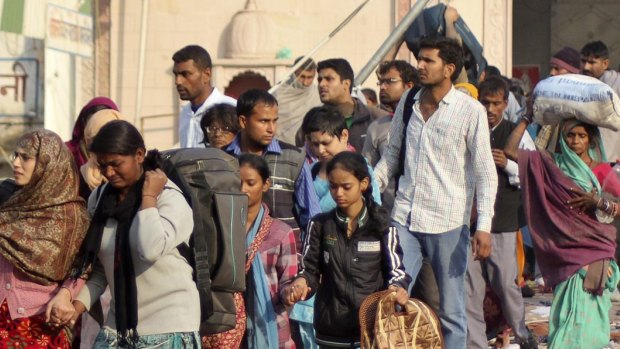
Supporters leave the ashram of Guru Rampal.Credit: Reuters
In an ironic trial twist, his male pride seems to have brought him undone. The elderly man had claimed impotence as his defence, but then passed a potency test ordered by the court.
The litany of sex crimes committed by these spiritual impostors, many of whom barely have basic primary school education, is astounding, as are the methods they have employed to thwart justice.
Guru Rampal, who founded the Santosh Ashram and enjoys a massive following in the populous state of Haryana bordering Delhi, skipped court on murder and rape charges 42 times between 2010 and 2014.
His followers protected him until police finally captured him by forcibly entering his ashram. They found the bodies of four women and a baby inside; a fifth woman died soon after. He and 22 followers were found guilty of their murders in October.
And it seems the Hindu holy men may not be alone in their violence.
The Catholic Church in India is presently investigating a case against a bishop who has been charged with the rape of a nun who served in his church in the southern state of Kerala. When the Bishop was released on bail and flew back in October to his parish, he was feted by his congregation.
The diocese has since released a calendar of Christian events and ceremonies for 2019 with the bishop as the poster boy on the cover.
When the Reuters survey was released, Indian government experts and those working for the protection of women were split on its findings, a BBC News investigation found.
Some said it showed that not enough was being done to tackle the danger women faced more than five years after the landmark Delhi case.
But the country’s National Commission for Women rejected the poll outright, saying countries where women could not speak out had fared better.
It also pointed out that rape, harassment and other violence against women had risen because more cases were now reported, driven by public awareness and outrage.
Have you experienced sexual violence? Did you decide to report it?
If you have a story to tell, The Age would like to hear from you - find out more here.